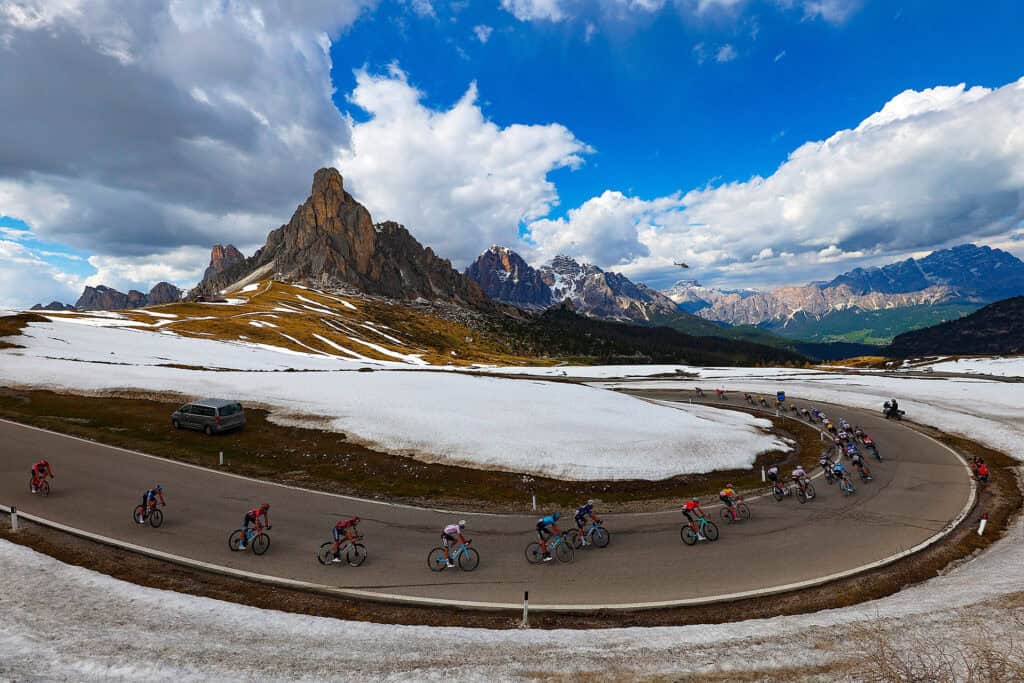Like many global markets, the bicycle market in Italy, renowned for its high-end craftsmanship and rich cycling heritage, is currently at a crossroads. We asked several experts from the Italian bicycle industry about their opinions on the market’s current state.

Together with the Tour de France, the Giro d’Italia is the largest and most famous cycling event in the world. This year, the three-week-long stage race once again captivated the sports world. However, the Giro 2024 provided a stage not only for the best cyclists in the peloton but also for the Italian bicycle industry. On the evening of the first stage, the Giro organizers from RCS Sport hosted a Bike Business Forum – an event that turned the spotlight on the bike economy, the Italian bicycle supply chain, and its spin-offs in the world of sport. Among the guests were several major names from the bicycle industry, including Nicola Rosin (CEO of Colnago), Cristiano De Rosa (Vice President of Italy’s bicycle industry association ANCMA) and Steve Smith (Head of Cycling at Manifattura Valcismon). The general sentiment of the event: despite the current difficult market conditions, there are early signs of recovery in the Italian bicycle market.
Italian bicycle market data from ANCMA
This is good news, as a glance at the current market developments shows that even Italy, one of the most traditional cycling countries in the world, suffers from global challenges similar to those of other major bicycle markets. According to the newest market data of ANCMA, 2023 saw a decline in mechanical bicycle sales by 24% and a decline in e-bike sales by 19%. As a result, the statisticians recorded a 23% year-on-year decrease in total sales volume. Local manufacturers recorded similar numbers: the production of traditional e-bikes declined by 23%, and the number of conventional bicycles decreased by 29%.
“The Italian bike industry is facing the same challenges as the rest of the world: an overabundance of products on the market, big brands offering deep discounts directly to consumers, leading to high dealer inventories, and consumers accustomed to asking for discounts before even inquiring about the price of a bike,” confirms Stefano Migliorini, CEO of Thok. However, despite these challenges, he also shares a positive side to the story – similar to the guests at the Bike Business Forum during the Giro d’Italia. “The market is alive and well, and people are buying and using bikes. The challenge for us is to not give in to the policy of discounts, which depreciates the product, makes the brand less credible, and hurts the whole industry,” he continues, adding that the first few months of 2024 show tentative signs of market recovery. “We’re confident in a gradual return to normalcy by September,” Migliorini states.
Daniele Carli from PR agency Vitamina C makes similar observations: “The Italian market is still suffering from the consequences of the COVID-19 years, worsened by national issues concerning incentive policies, infrastructure, and the difficulties of the local economy,” he explains, predicting that “growth should return by 2025.” Carli’s longer-term forecast is very optimistic: “Some of Italy’s weaknesses, such as being a still immature market for two-wheeler mobility, could be a positive starting point: sooner or later, we will reach the standards of the countries above the Alps, and I don’t think this future is far off. Maybe we will never become the Netherlands regarding bike use, but I believe we will one day be similar to Germany. This would mean doubling the size of the national market, given that in 2023 in Germany there was one bike sold for every 21 inhabitants, while in Italy one bike was sold for every 45.”
Road bike and gravel bike market as growth drivers
Interestingly, while the fundamental challenges in the Italian market are similar to those in other European countries, some companies report that the unique characteristics of the local cycling scene are helping them fare better through the crisis than other countries. “Since most of the business in Italy is in the high-end segment, things are more stable compared to other countries,” says Alberto Curtolo, Sales and Marketing Director at Selle Italia. He specifically cites the road bike and gravel bike markets as growth drivers, as well as e-bikes. “The first months of 2024 have been positive, so we are on the way to establishing a positive result at the end of the year,” he adds.
“The medium-high range products are going well, largely due to the steady demand for racing bikes and the growing popularity of gravel bikes,” confirms Fabio Guerini, Marketing and Sales Specialist at Deda Elementi. He also forecasts a near-term recovery: “In the first four months of this year, Deda experienced a 10% growth compared to 2023 – a trend that is also reflected in the sell-out data from stores in Italy. We believe the bike sector in Italy will experience a substantial recovery in the second half of 2024, with further consolidation in 2025, primarily driven by the gravel bike market,” he reports.
Claudio Marra, Global Vice President at Full Speed Ahead, also sees positive signs that the crisis may soon be over: “At the moment, things are looking good. Despite the less-than-perfect weather, sell-out in shops has been strong, and the forecast remains positive. Sales of road and gravel bikes, particularly high-end models, are doing very well. We’re also seeing a significant volume of high-end spare parts as end users look to upgrade their bikes. We expect a notable increase in sales compared to 2023, possibly even matching the 2022 season,” he says.
Retail: MSRP lowerings during high season
A retail perspective is provided by Erik Miorini, Mechanic at the shop Bike Map. He anticipates that the positive signals will be delayed in reaching the retail sector: “The general mood of the market is a bit worrying, with brands having tons of bikes in stock and lowering the MSRP during the high season. My expectation is that 2025 will be very hard, particularly concerning pre-orders. Nevertheless, the last six to seven months have been good for us in terms of sales and mechanic services. However, it’s still too early to make a more accurate prognosis,” is his assessment.
Our survey of experts shows that the Italian bicycle market is navigating a challenging landscape marked by high inventory levels and pricing pressures. However, there are positive indicators, especially in the high-end road and gravel bike segments, which continue to drive demand. In general, industry experts are optimistic, anticipating a gradual market rebound in the upcoming months. The recent Bike Business Forum held during the Giro d’Italia underscored this sentiment: while challenges persist, the resilience and innovation within the Italian bicycle industry offer a promising path forward.


